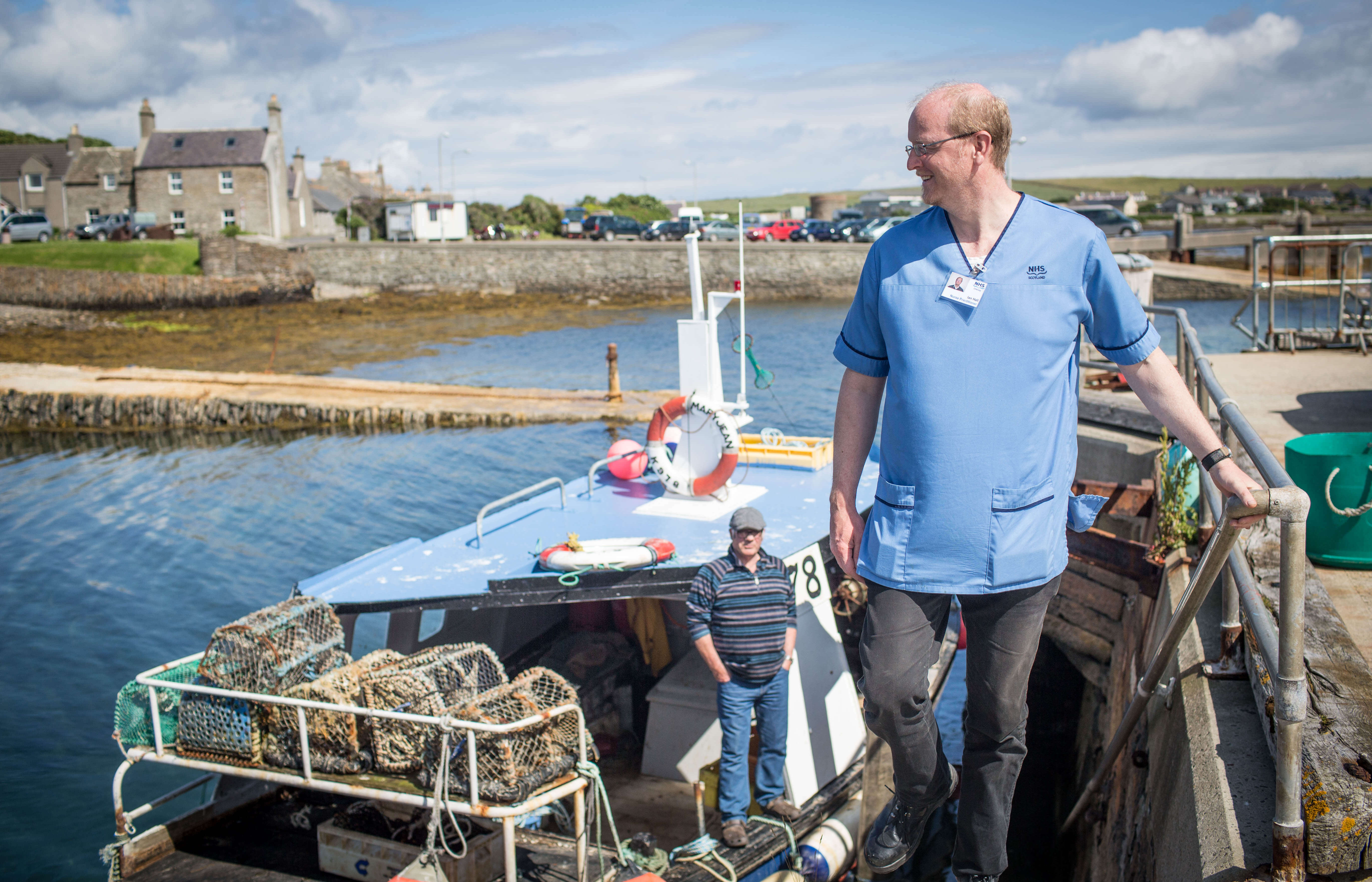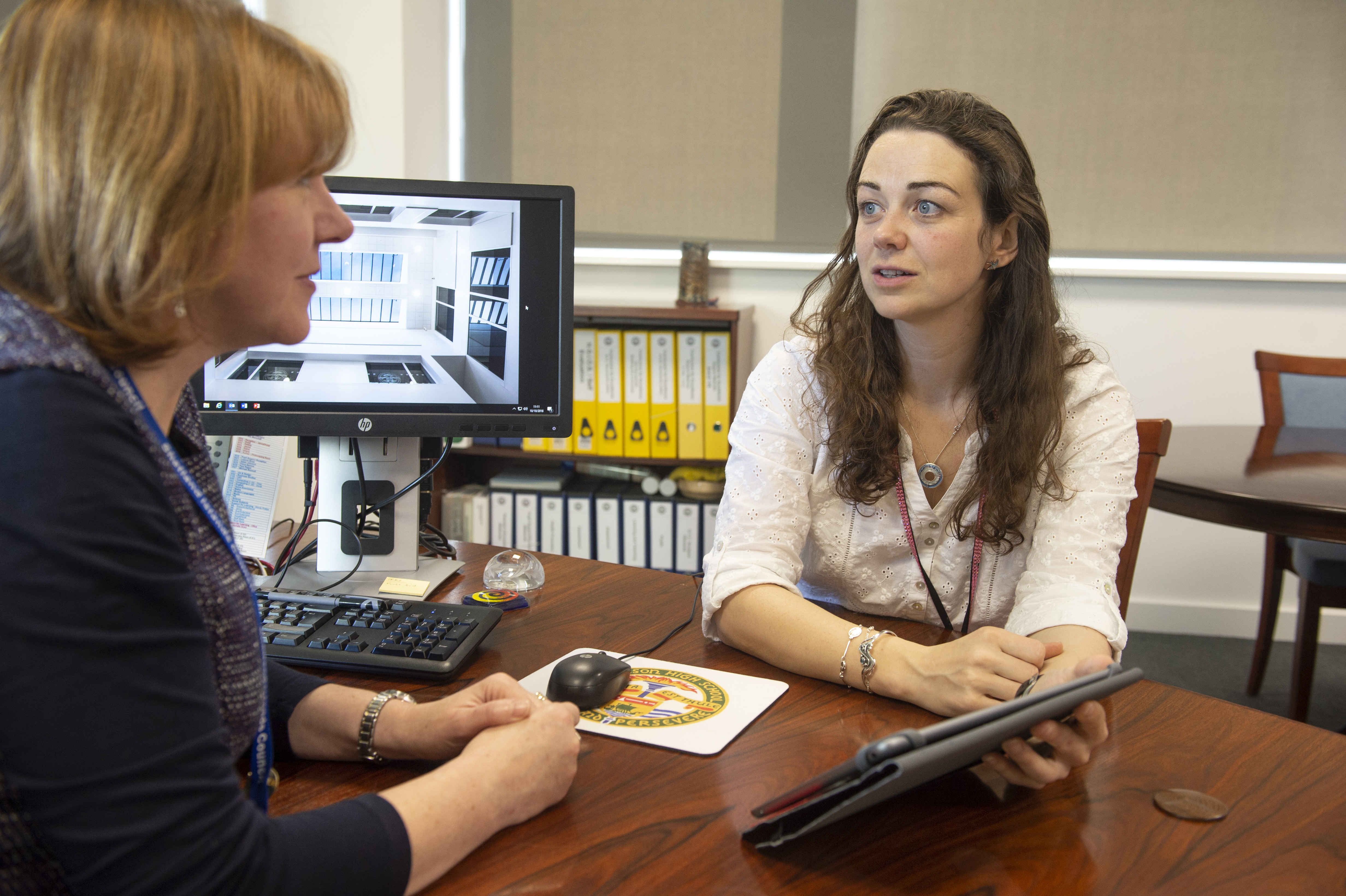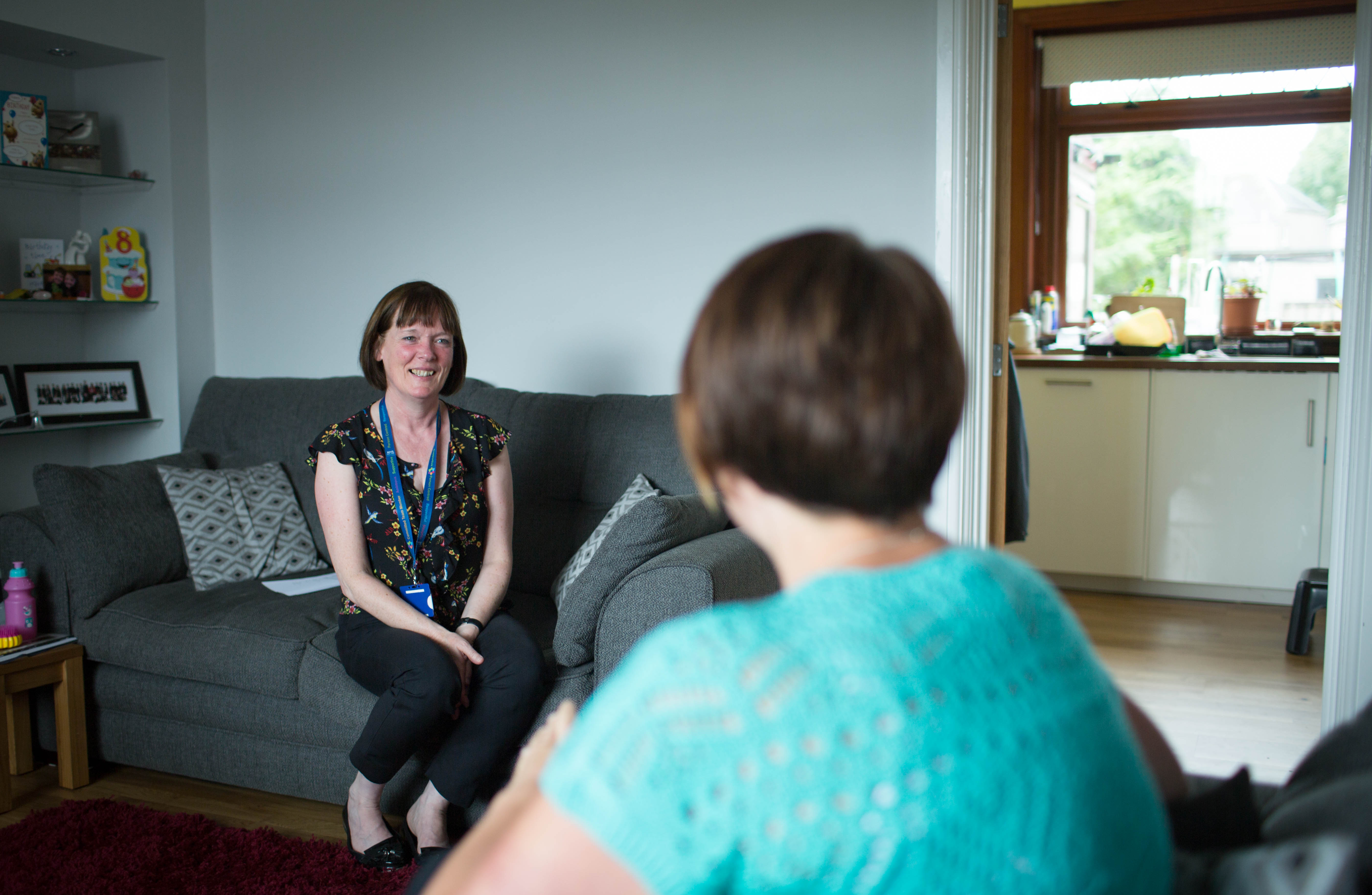
School nurse
School nurses lead health initiatives in primary and secondary schools and work with children and young people in areas such as emotional health and wellbeing, sexual health, substance misuse, and youth justice. School nurses provide support for children and young people who experience or are at risk of domestic violence or homelessness, those who are young carers, and those who are looked after, as well as those who need particular help to manage transitions.

Keri Ratter
Keri is passionate about delivering the right care for children and young people across the islands.
I grew up reading the Twinkle comic and I cherished my Nurse Nancy badge I received as a little girl – I still have it to this day. I’m a great talker and I believe the key to all nursing is good communication, so I guess I knew early on that I would work with people in a caring role. I started my nurse training at Robert Gordon University and after qualifying I spent five years working in hospital as a children’s nurse in Aberdeen. I always knew I wanted to move back to Shetland and when I returned, I worked initially in bank nursing – covering for the community children’s nurses and doing hospital shifts. I then did my health visitor training which also covered the school nursing role. This is when I just knew I had found my niche. I loved having more one-to-one contact with children and I felt instantly it was what I wanted to do. I really believe that I can make an impact in this role – I just want to do my best for the kids.
I am currently the lead School Nurse of a newly developed team, with new staff who are embracing a restructured way of working. All but myself are new to community nursing and the team was brought together at a time when the new national school nursing pathway was being introduced.
Therefore, my work is busy, changing, challenging, and developing. My day can start with a visit to the high school where I will meet with pupils to support their emotional and mental wellbeing. I will also meet with staff at the school where we will discuss the developing school nurse service.
Back at the office, I’m maintaining the work and contact with social workers, teachers, police and voluntary organisations, as well as colleagues on the team.
I have built on the school nursing service which was in place when I came into post. With time, I aim for a service which is more active and accessible to all schools and home-schooled children in Shetland. Examples of this include setting up a school drop-in service at two schools and I aim for this to become available in all secondary schools. I established a pilot project where pupils with an attendance of below 80% have a health review to assess if ill-health or emotional wellbeing is having an impact on their attendance. Pupils are now initiating contact themselves and I see this as a demonstration of the trust and support they can access from the team.
The school nursing service in Shetland involves covering 29 schools – a total of almost 1,400 secondary pupils and around 1,800 at primary level, as well as home schooled children. The school size varies, from only a handful of pupils in the entire school to around 900 in the biggest high school. Travel is all over the islands – it can take three-and-a-half hours on a ferry to reach the furthest away school from my base in Lerwick.
As a nurse, I strongly believe that we have a duty to give the best service we can, and for me this is especially so for children and young people. Giving them the best start in life will have a lasting impact for years to come, for themselves, and for those they have contact with, encouraging skills for satisfying, fulfilling, and healthy lives. As community nurses, and especially as Health Visitors and School Nurses, we have access to families and communities, and so the contact expands from that of just one person. This is a huge opportunity and privilege.
I am bursting with enthusiasm for what the school nursing team can achieve in helping young people reach their full potential.

Joan Gracie
The welfare of children has always been close to Joan Gracie’s heart, and as Team Leader for School Nursing in NHS Forth Valley, she feels she is making a real difference. “There are so many young people in need of help,” she says. “Here we are determined to see they get it, hopefully at an early stage.”
Joan manages the school nursing service in Stirling and Clackmannanshire, and oversees a team made up of a Health Care Assistant, a family support worker, two counsellors and 10 Staff Nurses. Between them they offer support to around 500 families a year. “We mainly work with children and young people for whom there are emotional and behavioural issues,” says Joan. “We spend time with them and their families to unpick what that’s about.”
When she came into school nursing from health visiting in 2007, Joan was struck by the need for modernisation. “It was the traditional medical model, nurses doing clinics and seeing to the routine physical health needs of children and young people,” says Joan. “I could see that change was required.”
The following year, Clackmannanshire School Nursing Service was selected as a pilot site for the Scottish Government’s Health and Wellbeing in Schools project, which came with the resources to create a gold-star service. “It offered an opportunity to do something different, to build capacity and partnership working, and think strategically,” says Joan
Bringing together all sectors – the education department, youth services, social services and charities – Joan and her team established a way of working that evaluated strongly. But when recession hit in 2010, funding fell away, and many staff went back to their substantive posts. Undeterred, Joan resolved to rebuild the service with reduced resources. “The team got together, and we thought about what we could do,” she says. “The way we work now is the result.”
The nurses on the team have received additional training to support children and families with the most complex needs, and they work closely with partners in the local authority and third sector to enable working together in more meaningful ways. “We gradually altered things to focus on the most vulnerable,” says Joan. “We can now show that most of the children, young people and families we work with have achieved significant progress.”
The service works with children with emotional and behavioural problems, those who have experienced domestic abuse, young carers, children on the child protection register, children who are looked after at home, children who are affected by substance misuse, homeless families, and others involved in the youth justice system. “It’s a long way from school nursing of the past,” says Joan. “The challenges children and young people are facing now are significant.”
The school nursing team is dealing with unprecedented demand for psychological support. Young people everywhere are under stress, and rates of low mood, anxiety and self-harming are high.
The team runs confidential, multi-agency, school based drop-in sessions on a weekly basis, “We ask the young people what they want, and make it happen,” says Joan. “It’s important they own the service we offer and let us know if it is meeting their needs.”
When a child comes to the team’s attention, maybe referred by a teacher, a parent, or sometimes by the child themselves, the nurses make contact and arrange to meet.
“Giving support to parents who are going through difficulties with their children is another key role. Parenting is complex and challenging and working with families to overcome obstacles is one of our core functions.”